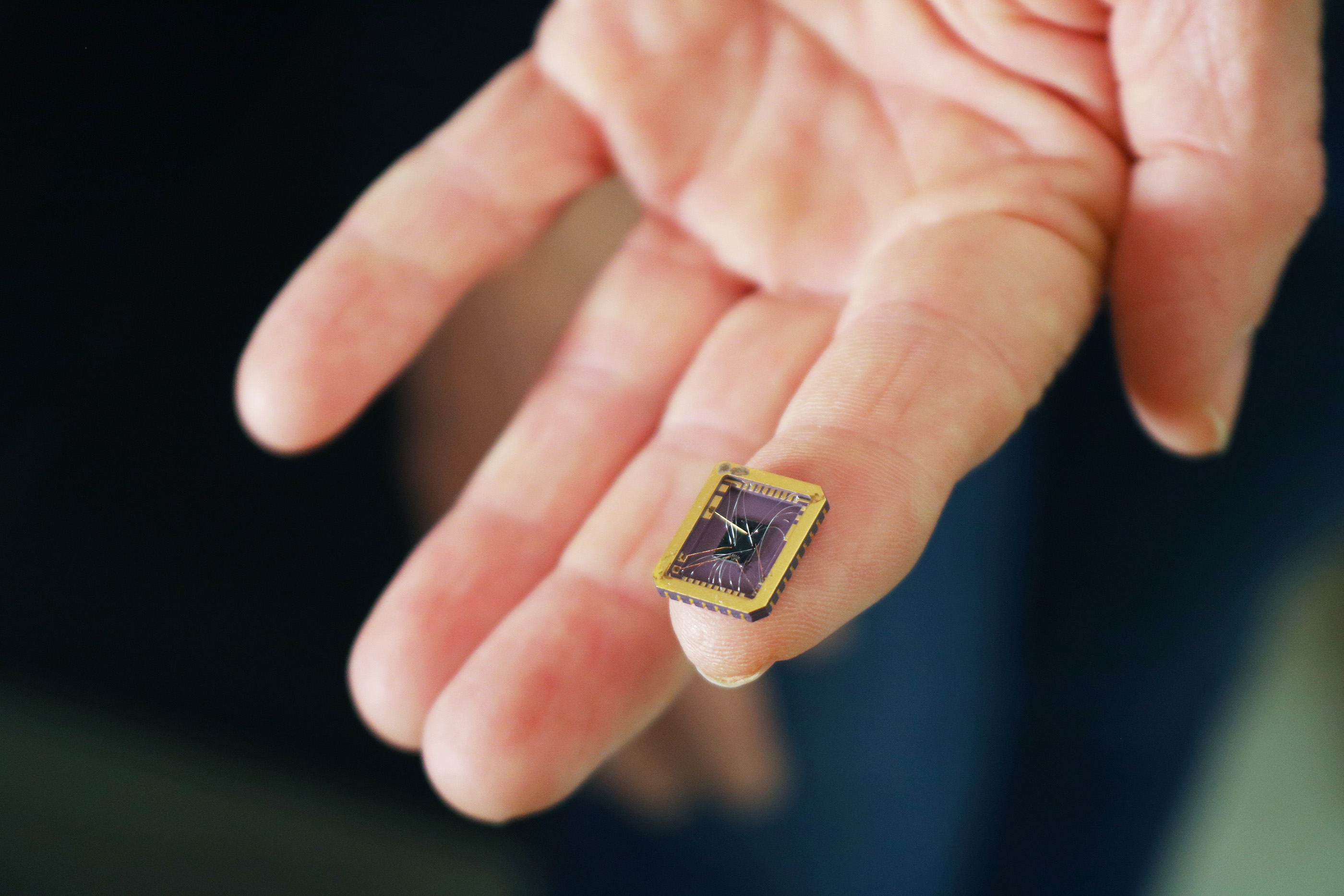
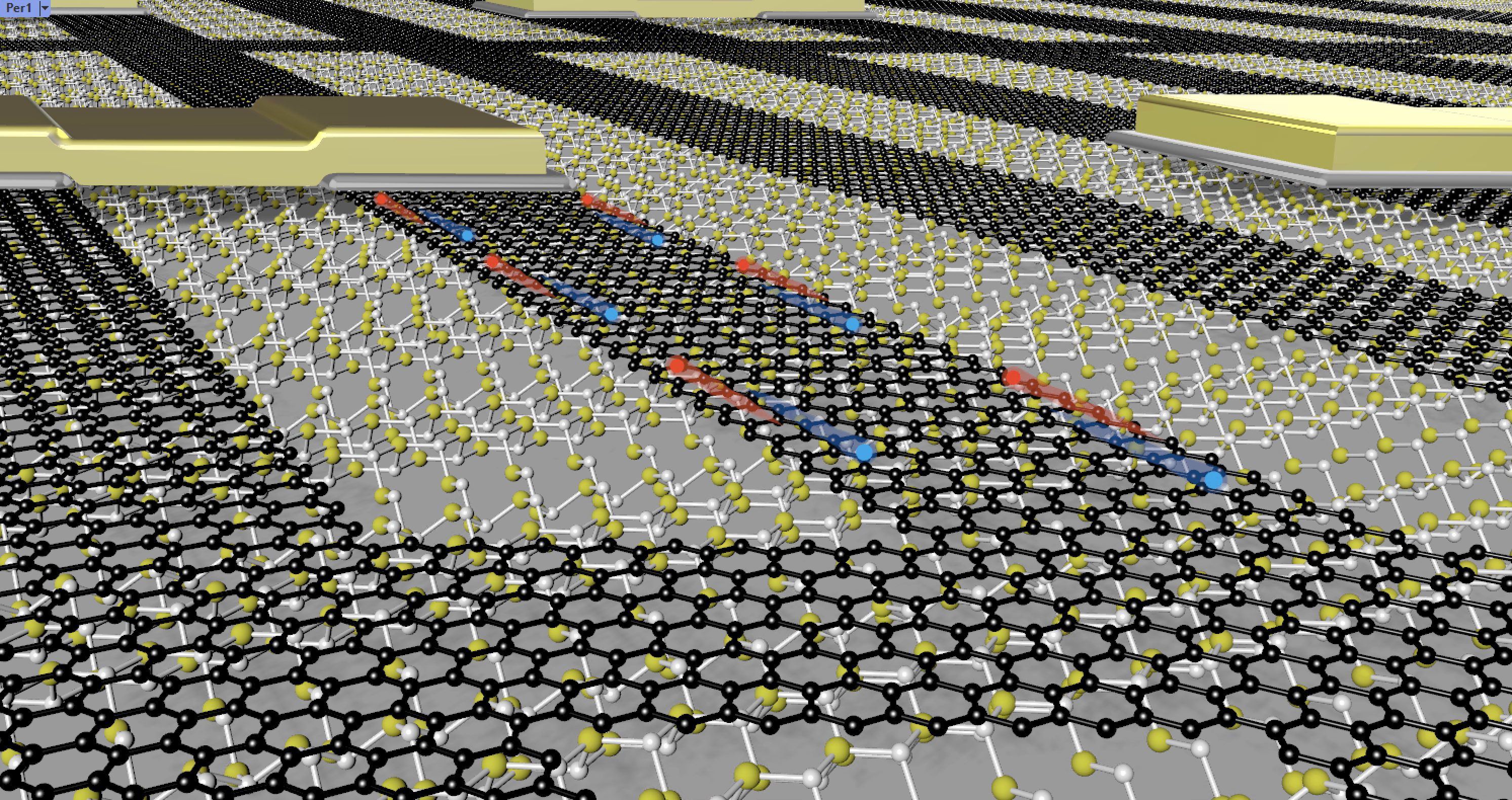
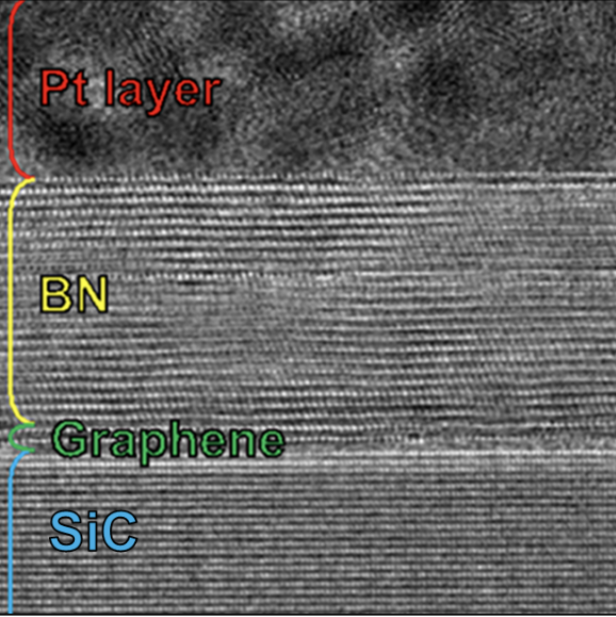
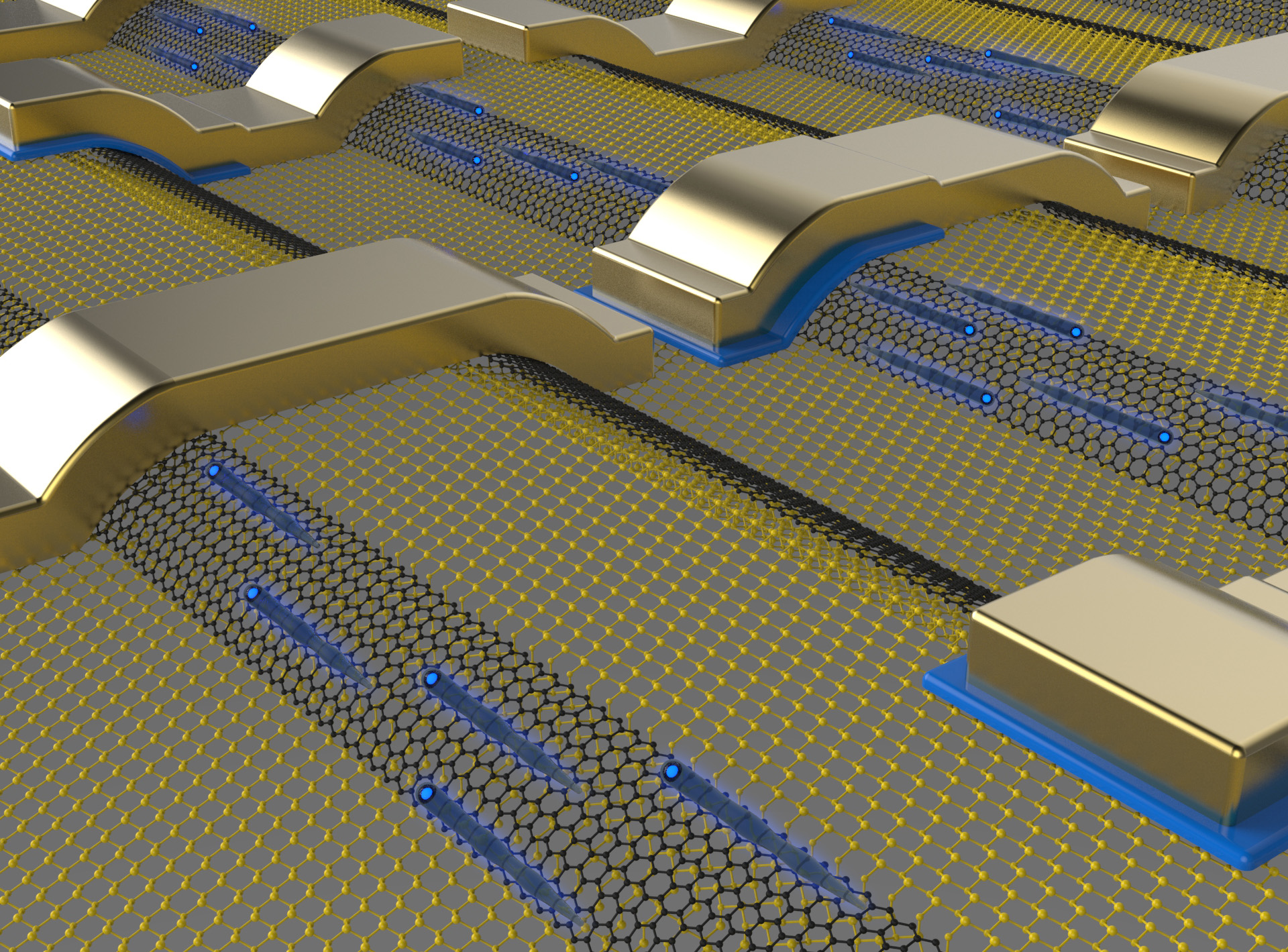
List of Milestone Publications
Press Coverage




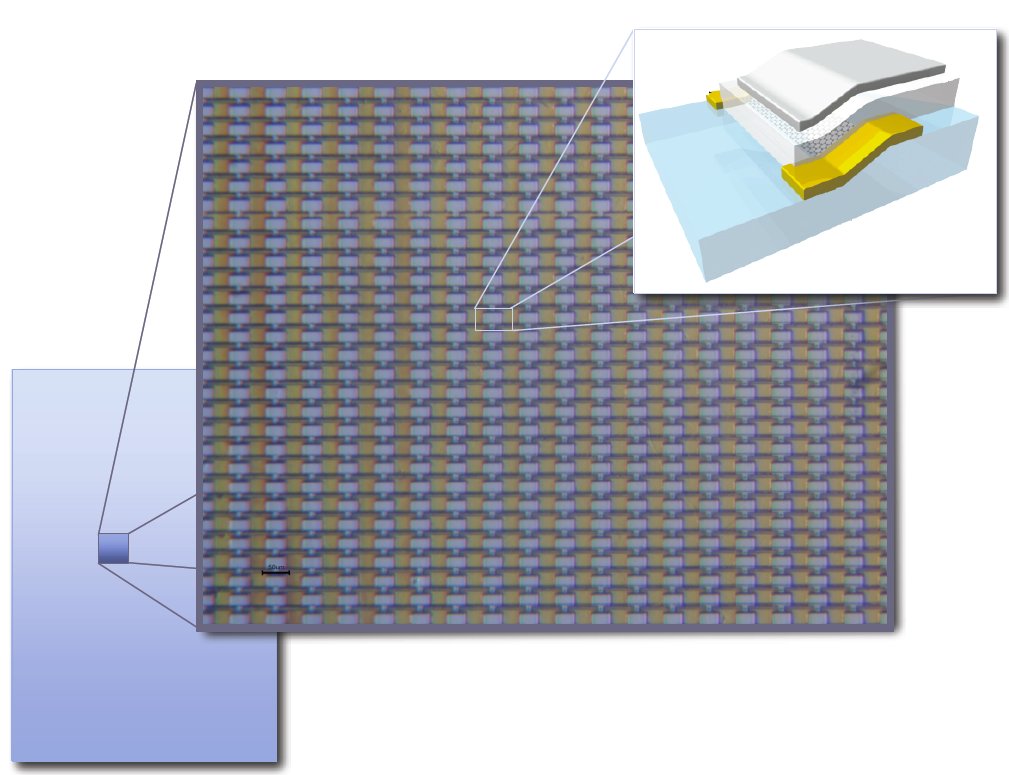
Since 2001 and the invention of graphene electronics (GT patent 2003) the Georgia Tech epitaxial graphene research team led by Walt de Heer and its collaborators are developing the new field of epitaxial graphene, or epigraphene, electronics.
Graphene has been known for decades in many forms (exfoliated, epitaxial, isolated) and a number of its properties were measured or inferred from related materials, like graphite and carbon nanotubes. Yet, only recently was its potential as an electronic material recognized. Epitaxial graphene on silicon carbide has played a pivotal role in this development: it was the first to be proposed as a platform for graphene-based electronics; the first measurements on graphene monolayers were made on epitaxial graphene; and the graphene-electronic band structure was first measured on EG. The epitaxial graphene program, initiated in 2001 at the Georgia Institute of Technology, has spearheaded graphene-based electronics and developed methods to produce electronic grade epitaxial graphene. The Georgia Tech program demonstrated many of graphene's fundamental and technologically important properties, including coherence and quantum confinement effects, chemical modification, electrostatic gating and large-scale integration. Currently, epitaxial graphene stands at the forefront of materials that may succeed (not replace!) silicon. In contrast to other candidate graphene-based materials, epitaxial graphene is produced in a simple, high-temperature annealing step on single-crystal silicon carbide, which itself is an important electronic material. Subsequent epitaxial graphene processing is straightforward and compatible with microelectronics procedures.
In this decade of research on graphene, methods have been developed to grow monolayer and multilayer epitaxial graphene (MEG) on the Si- and C-face of hexagonal silicon carbide with of up to 100 graphene sheets. The Georgia Tech Confinement Controlled Sublimation method can produce uniform epitaxial graphene layers with remarkable electronic properties. The monolayer films have high mobilities and exhibit the half integer quantum Hall effect. Surprisingly, the properties of MEG are more closely related to monolayer graphene rather than graphite, as a result of an unusual rotational stacking of the graphene; the electronic band structure of MEG is composed of Dirac cones like electronically decoupled graphene layers. The charge carriers are chiral and exhibit a non-trivial Berry's phase. Weak anti-localization and coherence and quantum confinement have been demonstrated. Landau level spectroscopy further exhibits record-breaking room temperature mobilities and well resolved Landau levels below 1 T, indicating extremely low carrier densities and good homogeneity of the material.
Large-scale electronic device patterning are being developed. Integration of 10,000 transistors has been demonstrated. Nanoscale structures (as narrow as 10 nm) are grown directly at specified positions on templated SiC substrate prepared using scalable photolithography and microelectronics processing. This avoids any damaging lithographic post-processing and smooth ribbons are obtained.
Dissipationless zero energy epigraphene edge state for nanoelectronics
V. Prudkovskiy et al.,
Arxiv 1910.03697. [arXiv]
Highly Ordered Boron Nitride/Epigraphene Epitaxial Films on Silicon Carbide by Lateral Epitaxial Deposition
J. Gigliotti et al.,
ACS Nano 2020, 14, 12962. [arXiv]
Epigraphene, a review
C. Berger, E.H. Conrad, W. A. de Heer,
Landolt – Börstein encyclopedia Springer-Verlag GmbH Germany 2018, G. Chiarotti, P. Chiaradia (eds.), Physics of Solid Surfaces, Subvolume B, Chapter 166 (pp1-87). [arXiv]
Exceptional ballistic transport in epitaxial graphene nanoribbons
J. Baringhaus et al.,
Nature, 506 (2014) 349. [arXiv]
Wafer bonding solution to epitaxial graphene-silicon integration
R. Dong, Z. Guo, M. Ruan, J. Kunc, S. K Bhattacharya, C. Berger, W. A. de Heer,
J. Phys D 47, 094001 (2014). [arXiv]
Record Maximum Oscillation Frequency in C-face Epitaxial Graphene transistors
Z. Guo, R. Dong, P.S. Chakraborty, N. Lourenco, J. Palmer, Y. Hu, M. Ruan, J. Hankinson, J. Kunc, J. D. Cressler, C. Berger, W. A. de Heer,
Nano Letters 13, 942 (2013). [arXiv]
Large area and structured epitaxial graphene produced by confinement controlled sublimation of silicon carbide
W. A. de Heer, C. Berger, M. Ruan, M. Sprinkle, X. Li, Yike Hu, B. Zhang, J. Hankinson, E.H. Conrad,
PNAS 108 (41) 16900 (2011). [arXiv]
Scalable Templated growth of graphene nanoribbons on SiC
M. Sprinkle, M. Ruan, X. Wu, Y. Hu, M. Rubio-Roy, J. Hankinson, C. Berger, W. A. de Heer,
Nature Nanotechnology 5, 727 (2010). [arXiv]
Half integer quantum Hall effect in high mobility single layer epitaxial graphene
X. Wu, Y. Hu, M. Ruan, N. K. Madiomanana, J. Hankinson, M. Sprinkle, C. Berger, W. A. de Heer,
Applied Physics Letters 95, 223108 (2009). [arXiv]
First direct observation of a nearly ideal graphene band structure
M. Sprinkle, D. Siegel, Y. Hu, J. Hicks, P. Soukiassan, A. Tejeda, A. Taleb-Ibrahimi, P. Le Févre, F. Bertran, S. Vizzini, H. Enriquez, S. Chiang, C. Berger, W. A. de Heer, A. Lanzara, E. H. Conrad,
Phys Rev Lett 103, 226803 (2009). [arXiv]
Epitaxial Graphene Electron Devices on SiC Substrates
J. Kedzierski, P.-L. Hsu, P. Healey, P. Wyatt, C. Keast, M. Sprinkle, C. Berger, W. A. de Heer,
IEEE Transactions on Electron Devices 55, 2078 (2008). [arXiv]
Why Multilayer Graphene on 4H-SiC(000-1) Behaves Like a Single Sheet of Graphene
J. Hass, F. Varchon, J. E. Millan-Otoya, M. Sprinkle, W. A. de Heer, C. Berger, P. N. First, L. Magaud, E. H. Conrad,
Phys. Rev. Let 100, 125504 (2008). [HAL]
Landau level-spectroscopy of ultra-thin graphite layers
M. Sadowski, G. Martinez, M. Potemski, C. Berger, W.A. de Heer,
Physical Review Letters 97, 266,605 (2006). [arXiv]
Electronic confinement and coherence in patterned epitaxial graphene
C. Berger et al.,
Science, 312 (2006) 1191-1196. [Link]
Ultrathin Epitaxial Graphite: 2D Electron Gas Properties and a Route Toward Graphene-Based Nanoelectronics
C. Berger et al.,
J Phys Chem B, 108 (2004) 19912-19916. [arXiv]